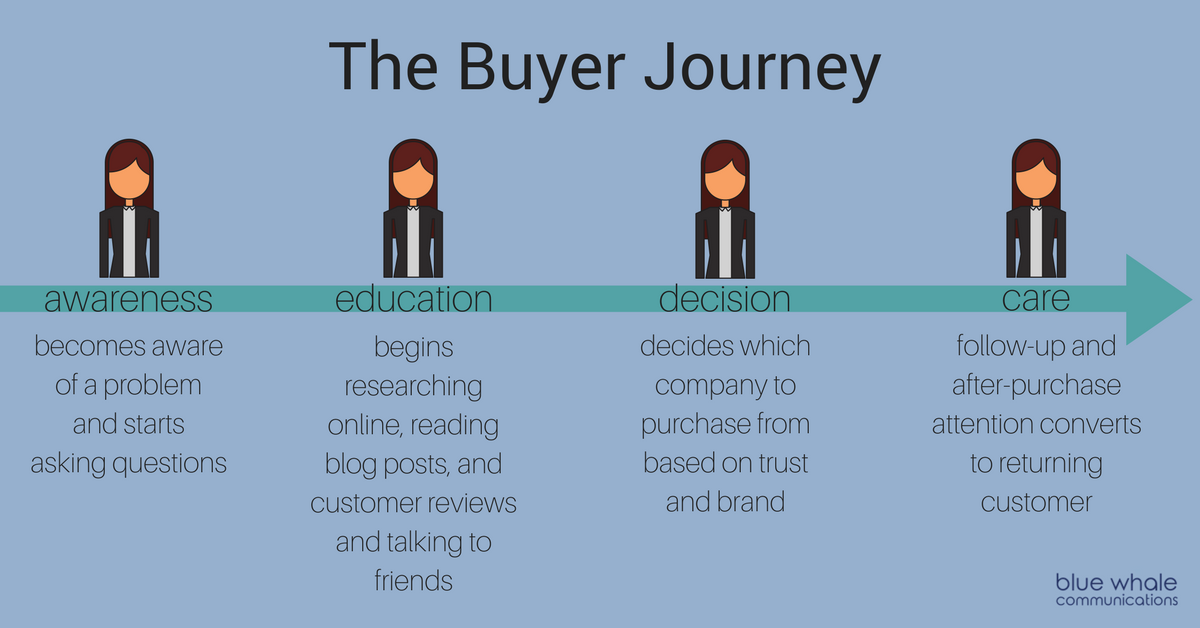What is Content Marketing, Anyway?
Filed under:
Long gone are the days when customers walk into a store and ask a salesperson questions. Consumer behaviour has changed, and people have taken on more responsibility for educating themselves before being ready to make a purchase.
Think about the last time you bought a car. Before you ever stepped foot inside a dealership, you already had a pretty good idea of what you wanted. The make, the model, the colour, transmission – because you did the research online and talked to friends about their personal experiences. Part of this is because the information is more readily available to you (thank you, world wide web) but also because you, like everyone else, are just plain old tired of having companies throw ads in your face or call your home during dinner hours with a sales pitch.
So before you called the dealership, you knew the Audi you wanted would be more expensive, but you had also already made the decision it was worth it. It had more horsepower (for when you want to feel like a kid again and rip down the highway), a more spacious backseat (for transporting the kids back and forth to hockey), better fuel economy (for road trips to visit the in-laws), it comes in “vegas yellow”, and you can upgrade to the sick rims.
You also knew exactly which dealership in town to go to – not the one Paul went to, he had terrible service and ended up paying $2500 more than Natalie did. Natalie had a great experience with the whole team at her dealership, and they threw in a gas card for her, too.
Consumers today are educating themselves using a variety of resources available to them – online ads, social media, word of mouth, and eventually company websites. The key to getting consumers to journey through your sales funnel until they’re ready to buy is simple: use great content available at the right time to build their trust.
But how do you do that? Start by looking at the customer profiles you’ve created, and educate them. If you’re Audi, and you want to get new customers into your dealerships across Canada before year end, maybe you write a blog post about winter driving tips. Safety ratings, customer reviews, and a solid winter tire line-up are the types of information drivers would be looking for. It may sound counter-intuitive, but what you don’t want to do (and this is crucial to the success of your campaign) is tell them that Audi is the best choice.
Content marketing is about your target audience, and the goal is to educate them, not promote your product.
But one article or blog post isn’t going to cut it. The more content you have, and on the more channels possible, the better. Social media channels, sponsored posts, newsletters, events, webinars – the list goes on. You want to make sure your customers have the information they need to have the best experience possible, regardless of where they get their product.
Check out this example from Bridgestone Tire explaining why you shouldn’t drive on winter tires all year round. They explain what a winter tire is, how it’s different, and offer tips to simplify the tire-swap twice a year. Even though the original piece is housed on their website, it’s a great post that can be shared across multiple platforms, educating the public about the need for two sets of tires – without actually trying to sell you a set of theirs.
That’s how you build trust. And that’s how you become the go-to when they have questions or are ready to buy.
Because consumers and potential customers will find your content at various stages of the buyer journey, you want to make sure you have content for all four of the main stages:
- Awareness
- Education (Pre-purchase)
- Decision (Purchase)
- Care (Post-purchase)

By making the right information available to your consumers at the right time, they will begin to view your brand as trustworthy and reliable, and when they decide they have made their decision and are ready to buy, they will contact you.
That’s right – no more chasing after cold leads.
If you can build trust with a consumer by being open, transparent, and providing them with the right information when they want it, they will come to you when they’re ready to buy. But, in order to move your consumers along the buyer journey, the content you’re sharing has to be geared towards them and has to make an impression. Focus on your customer profiles, and create content for a full buyer journey for each of your profiles. First-time car buyers, First-time Audi drivers, and returning Audi drivers all have a different buyer journey and all have a need for different information, even if they are all looking to buy a car before that first snow storm hits.
If done properly, content marketing can dramatically decrease the amount of time your sales reps spend chasing leads, and dramatically increase the percentage of inbound calls that lead to a sale. Content marketing converts people into leads and leads into customers six times more often than other marketing methods.
Not quite sure how to get set-up your content marketing strategy or need help creating the content for your campaign? Let’s talk – we can help you build trust and develop long-term relationships with clients who didn’t even know they needed you, until now.
Happy Writing!
Nikki